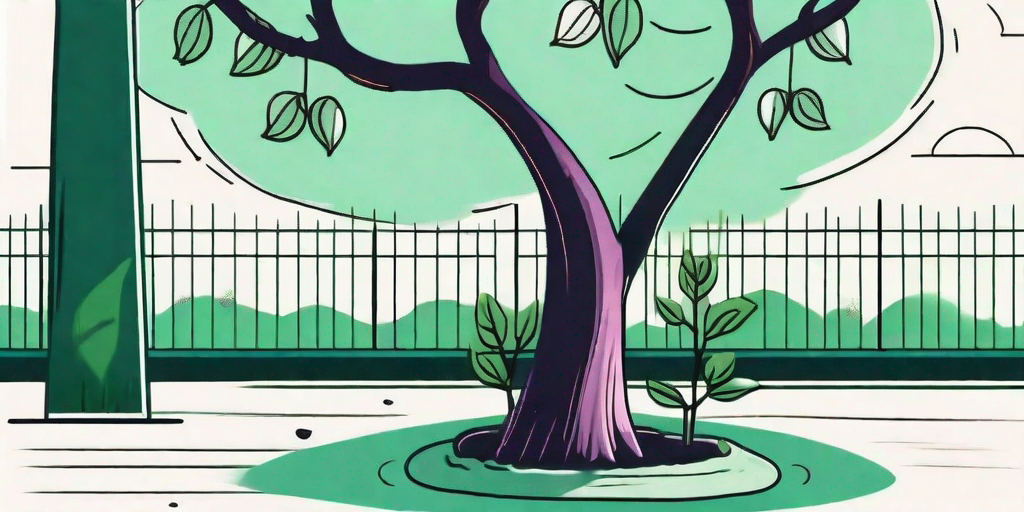
If you've ever bitten into a juicy, ripe plum and thought, "I wish I could grow these myself," then you're in the right place. This guide is designed to take you from plum enthusiast to plum farmer, all from the comfort of your own backyard. So, let's get started, shall we?
Understanding Your Plum Tree
Before you start digging holes and planting seeds, it's important to understand a little bit about the tree you're about to grow. Plum trees are part of the Prunus genus, and they love the sun. They're also quite sociable, preferring to be planted near other trees. So, if your garden is a bit of a loner, you might want to consider getting it some friends.
Plum trees come in many varieties, each with their own unique characteristics. Some are best for eating fresh, while others are perfect for jams and jellies. So, think about what you want from your tree before you choose your variety. It's like dating, but with less awkward conversation and more delicious fruit.
Choosing the Right Variety
There are over 200 varieties of plum trees, but don't let that overwhelm you. Think of it as a buffet of options. Some popular choices include the 'Victoria', known for its sweet fruit and hardy nature, and the 'Damson', famed for its tart flavor and use in traditional British preserves.
Consider your local climate when choosing your variety. Some plum trees are like beach-goers, loving the sun and heat, while others prefer a cooler, more temperate climate. It's all about finding the right match.
Planting Your Plum Tree
Now that you've chosen your variety, it's time to get your hands dirty. But before you start digging, there are a few things you need to prepare.
First, you'll need a good location. Plum trees need at least six hours of sunlight each day, and they prefer well-drained soil. They're not fans of wet feet, so avoid areas where water tends to pool.
Preparing the Soil
Plum trees are not picky eaters, but they do prefer a well-balanced diet. This means a soil pH between 6.0 and 7.0. You can test your soil using a kit from your local garden center. If your soil is too acidic or alkaline, don't worry. There are plenty of soil amendments available to help you balance it out.
Once your soil is ready, it's time to dig a hole. This should be twice as wide and just as deep as the root ball of your tree. If you're planting more than one tree, make sure to space them about 20 feet apart. Remember, they like company, but they also value their personal space.
Planting the Tree
Place your tree in the hole, making sure it's straight. Backfill the hole with soil, firming it gently around the base of the tree. Water thoroughly, and voila! You've planted a plum tree. Now, all you have to do is wait for it to grow.
But wait, there's more! Just like a pet, your tree will need some care and attention as it grows. This includes regular watering, pruning, and protection from pests and diseases. But don't worry, it's not as daunting as it sounds.
Caring for Your Plum Tree
Watering your tree is simple. During dry periods, give it a deep watering once a week. In wetter periods, you can cut back. Overwatering can lead to root rot, which is as unpleasant as it sounds.
Pruning is a bit more complex, but think of it as giving your tree a haircut. It helps to promote growth, improve fruit production, and keep the tree healthy. The best time to prune is in early spring, before the tree starts to bud.
Dealing with Pests and Diseases
Like all plants, plum trees can be affected by pests and diseases. Common issues include aphids, plum moth caterpillars, and silver leaf disease. But don't panic! With regular checks and the right treatment, these can be managed effectively.
Remember, prevention is better than cure. Regular pruning, proper watering, and good hygiene can help keep your tree healthy and happy.
Frequently Asked Questions
When will my tree start to produce fruit?
Most plum trees will start to bear fruit 4 to 6 years after planting. So, while you won't get instant gratification, the wait will be worth it.
Can I grow a plum tree from a seed?
Yes, but it's a bit more complex than planting a tree from a nursery. The seed needs to be stratified, or exposed to cold temperatures, before it can germinate. It's a bit like sending the seed to boot camp.
How much fruit will my tree produce?
This depends on the variety and the care you give your tree. But on average, a mature plum tree can produce between 30 and 150 lbs of fruit each year. That's a lot of plums!
Conclusion
So there you have it, a comprehensive guide to growing your own plum tree. It might seem like a lot of work, but the rewards are worth it. Just imagine biting into a juicy plum that you've grown yourself. Now that's satisfaction.
So, why not give it a try? Plant a seed, nurture it, and watch it grow. Who knows, you might just find that you have a green thumb after all.











